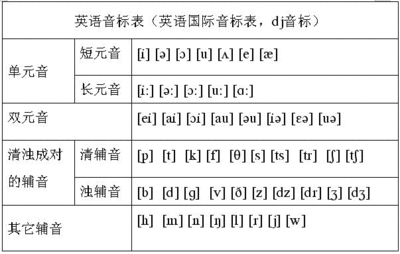一个用eXosip实现的UAC和UAS的例子调试成功 libexosip2
我是利用eXosip协议栈进行开发的,网上有一篇<一个简单的sip呼叫例子>,写的不错,但是好像有一些问题,而对于初学者来说,能拿到一个好的例子,对sip的理解可以到达事半功倍的效果。于是便把自己的写的例子拿出来,让大家参考一下,若有问题,欢迎指正。
只需把里面的IP地址改正、编译即可使用。
/******************************************
编译方法:
gcc xxx.c -o xxx -leXosip2
****************************************/
/*******************UAS*****************************************************
本文可以任意转载,但必须保留出处
作者:rainfish
网址:http://blog.csdn.net/bat603/
测试环境:eXosip3.0.1/redhat AS 4
***************************************************************************/
#include <eXosip2/eXosip.h>
#include <osip2/osip_mt.h>
#include <stdio.h>
#include <stdlib.h>
#include <netinet/in.h>
#include <sys/socket.h>
#include <sys/types.h>
int
main (int argc, char *argv[])
{
eXosip_event_t *je = NULL;
osip_message_t *ack = NULL;
osip_message_t *invite = NULL;
osip_message_t *answer = NULL;
sdp_message_t *remote_sdp = NULL;
int call_id, dialog_id;
int i,j;
int id;
char *sour_call = "sip:133@192.168.0.133";
char *dest_call = "sip:140@192.168.0.140:5060";
char command;
char tmp[4096];
char localip[128];
int pos = 0;
//初始化sip
i = eXosip_init ();
if (i != 0)
{
printf ("Can't initialize eXosip!/n");
return -1;
}
else
{
printf ("eXosip_init successfully!/n");
}
i = eXosip_listen_addr (IPPROTO_UDP, NULL, 5060, AF_INET, 0);
if (i != 0)
{
eXosip_quit ();
fprintf (stderr, "eXosip_listen_addr error!/nCouldn't initialize transport layer!/n");
}
for(;;)
{
//侦听是否有消息到来
je = eXosip_event_wait (0,50);
//协议栈带有此语句,具体作用未知
eXosip_lock ();
eXosip_default_action (je);
eXosip_automatic_refresh ();
eXosip_unlock ();
if (je == NULL)//没有接收到消息
continue;
// printf ("the cid is %s, did is %s/n", je->did, je->cid);
switch (je->type)
{
case EXOSIP_MESSAGE_NEW://新的消息到来
printf (" EXOSIP_MESSAGE_NEW!/n");
if (MSG_IS_MESSAGE (je->request))//如果接受到的消息类型是MESSAGE
{
{
osip_body_t *body;
osip_message_get_body (je->request, 0, &body);
printf ("I get the msg is: %s/n", body->body);
//printf ("the cid is %s, did is %s/n", je->did, je->cid);
}
//按照规则,需要回复200 OK信息
eXosip_message_build_answer (je->tid, 200,&answer);
eXosip_message_send_answer (je->tid, 200,answer);
}
break;
case EXOSIP_CALL_INVITE:
//得到接收到消息的具体信息
printf ("Received a INVITE msg from %s:%s, UserName is %s, password is %s/n",je->request->req_uri->host,
je->request->req_uri->port, je->request->req_uri->username, je->request->req_uri->password);
//得到消息体,认为该消息就是SDP格式.
remote_sdp = eXosip_get_remote_sdp (je->did);
call_id = je->cid;
dialog_id = je->did;
eXosip_lock ();
eXosip_call_send_answer (je->tid, 180, NULL);
i = eXosip_call_build_answer (je->tid, 200, &answer);
if (i != 0)
{
printf ("This request msg is invalid!Cann't response!/n");
eXosip_call_send_answer (je->tid, 400, NULL);
}
else
{
snprintf (tmp, 4096,
"v=0/r/n"
"o=anonymous 0 0 IN IP4 0.0.0.0/r/n"
"t=1 10/r/n"
"a=username:rainfish/r/n"
"a=password:123/r/n");
//设置回复的SDP消息体,下一步计划分析消息体
//没有分析消息体,直接回复原来的消息,这一块做的不好。
osip_message_set_body (answer, tmp, strlen(tmp));
osip_message_set_content_type (answer, "application/sdp");
eXosip_call_send_answer (je->tid, 200, answer);
printf ("send 200 over!/n");
}
eXosip_unlock ();
//显示出在sdp消息体中的 attribute 的内容,里面计划存放我们的信息
printf ("the INFO is :/n");
while (!osip_list_eol (remote_sdp->a_attributes, pos))
{
sdp_attribute_t *at;
at = (sdp_attribute_t *) osip_list_get (remote_sdp->a_attributes, pos);
printf ("%s : %s/n", at->a_att_field, at->a_att_value);//这里解释了为什么在SDP消息体中属性a里面存放必须是两列
pos ++;
}
break;
case EXOSIP_CALL_ACK:
printf ("ACK recieved!/n");
// printf ("the cid is %s, did is %s/n", je->did, je->cid);
break;
case EXOSIP_CALL_CLOSED:
printf ("the remote hold the session!/n");
// eXosip_call_build_ack(dialog_id, &ack);
//eXosip_call_send_ack(dialog_id, ack);
i = eXosip_call_build_answer (je->tid, 200, &answer);
if (i != 0)
{
printf ("This request msg is invalid!Cann't response!/n");
eXosip_call_send_answer (je->tid, 400, NULL);
}
else
{
eXosip_call_send_answer (je->tid, 200, answer);
printf ("bye send 200 over!/n");
}
break;
case EXOSIP_CALL_MESSAGE_NEW://至于该类型和EXOSIP_MESSAGE_NEW的区别,源代码这么解释的
/*
/* request related events within calls (except INVITE) */
EXOSIP_CALL_MESSAGE_NEW, /**< announce new incoming request. */
/* response received for request outside calls */
EXOSIP_MESSAGE_NEW, /**< announce new incoming request. */
我也不是很明白,理解是: EXOSIP_CALL_MESSAGE_NEW是一个呼叫中的新的消息到来,比如ring trying都算,所以在接受到后必须判断
该消息类型,EXOSIP_MESSAGE_NEW而是表示不是呼叫内的消息到来。
该解释有不妥地方,仅供参考。
*/
printf(" EXOSIP_CALL_MESSAGE_NEW/n");
if (MSG_IS_INFO(je->request)//如果传输的是INFO方法
{
eXosip_lock ();
i = eXosip_call_build_answer (je->tid, 200, &answer);
if (i == 0)
{
eXosip_call_send_answer (je->tid, 200, answer);
}
eXosip_unlock ();
{
osip_body_t *body;
osip_message_get_body (je->request, 0, &body);
printf ("the body is %s/n", body->body);
}
}
break;
default:
printf ("Could not parse the msg!/n");
}
}
}
/*******************UAC*****************************************************
本文可以任意转载,但必须保留出处
作者:rainfish
网址:http://blog.csdn.net/bat603/
测试环境:eXosip3.0.1/redhat AS 4
***************************************************************************/
#include <eXosip2/eXosip.h>
#include <stdio.h>
#include <stdlib.h>
#include <netinet/in.h>
#include <sys/socket.h>
#include <sys/types.h>
int
main (int argc, char *argv[])
{
eXosip_event_t *je;
osip_message_t *reg = NULL;
osip_message_t *invite = NULL;
osip_message_t *ack = NULL;
osip_message_t *info = NULL;
osip_message_t *message = NULL;
int call_id, dialog_id;
int i,flag;
int flag1 = 1;
int id;
char *identity = "sip:140@192.168.0.140";
char *registerer = "sip:192.168.0.133:5060";
char *source_call = "sip:140@192.168.0.140";
char *dest_call = "sip:133@192.168.0.133:5060";
char command;
char tmp[4096];
char localip[128];
printf("r 向服务器注册/n/n");
printf("c 取消注册/n/n");
printf("i 发起呼叫请求/n/n");
printf("h 挂断/n/n");
printf("q 退出程序/n/n");
printf("s 执行方法INFO/n/n");
printf("m 执行方法MESSAGE/n/n");
//初始化
i = eXosip_init ();
if (i != 0)
{
printf ("Couldn't initialize eXosip!/n");
return -1;
}
else
{
printf ("eXosip_init successfully!/n");
}
i = eXosip_listen_addr (IPPROTO_UDP, NULL, 5060, AF_INET, 0);
if (i != 0)
{
eXosip_quit ();
fprintf (stderr, "Couldn't initialize transport layer!/n");
return -1;
}
flag = 1;
while (flag)
{
printf ("please input the comand:/n");
scanf ("%c", &command);
getchar ();
switch (command)
{
case 'r':
printf ("This modal isn't commpleted!/n");
break;
case 'i':/* INVITE */
i = eXosip_call_build_initial_invite (&invite, dest_call, source_call, NULL, "This si a call for a conversation");
if (i != 0)
{
printf ("Intial INVITE failed!/n");
break;
}
//符合SDP格式,其中属性a是自定义格式,也就是说可以存放自己的信息,但是只能是两列,比如帐户信息
//但是经测试,格式:v o t必不可少,原因未知,估计是协议栈在传输时需要检查的
snprintf (tmp, 4096,
"v=0/r/n"
"o=anonymous 0 0 IN IP4 0.0.0.0/r/n"
"t=1 10/r/n"
"a=username:rainfish/r/n"
"a=password:123/r/n");
osip_message_set_body (invite, tmp, strlen(tmp));
osip_message_set_content_type (invite, "application/sdp");
eXosip_lock ();
i = eXosip_call_send_initial_invite (invite);
eXosip_unlock ();
flag1 = 1;
while (flag1)
{
je = eXosip_event_wait (0, 200);
if (je == NULL)
{
printf ("No response or the time is over!/n");
break;
}
switch (je->type)
{
case EXOSIP_CALL_INVITE:
printf ("a new invite reveived!/n");
break;
case EXOSIP_CALL_PROCEEDING:
printf ("proceeding!/n");
break;
case EXOSIP_CALL_RINGING:
printf ("ringing!/n");
// call_id = je->cid;
// dialog_id = je->did;
printf ("call_id is %d, dialog_id is %d /n", je->cid, je->did);
break;
case EXOSIP_CALL_ANSWERED:
printf ("ok! connected!/n");
call_id = je->cid;
dialog_id = je->did;
printf ("call_id is %d, dialog_id is %d /n", je->cid, je->did);
eXosip_call_build_ack (je->did, &ack);
eXosip_call_send_ack (je->did, ack);
flag1 = 0;
break;
case EXOSIP_CALL_CLOSED:
printf ("the other sid closed!/n");
break;
case EXOSIP_CALL_ACK:
printf ("ACK received!/n");
break;
default:
printf ("other response!/n");
break;
}
eXosip_event_free (je);
}
break;
case 'h':
printf ("Holded !/n");
eXosip_lock ();
eXosip_call_terminate (call_id, dialog_id);
eXosip_unlock ();
break;
case 'c':
printf ("This modal isn't commpleted!/n");
break;
case 's':
//传输INFO方法
eXosip_call_build_info (dialog_id, &info);
snprintf (tmp , 4096,
"hello,rainfish");
osip_message_set_body (info, tmp, strlen(tmp));
//格式可以任意设定,text/plain代表文本信息
osip_message_set_content_type (info, "text/plain");
eXosip_call_send_request (dialog_id, info);
break;
case 'm':
//传输MESSAGE方法,也就是即时消息,和INFO方法相比,我认为主要区别,是MESSAGE不用建立连接,直接传输信息,而INFO必须
//在建立INVITE的基础上传输。
printf ("the mothed :MESSAGE/n");
eXosip_message_build_request (&message, "MESSAGE", dest_call, source_call, NULL);
snprintf (tmp, 4096,
"hellor rainfish");
osip_message_set_body (message, tmp, strlen(tmp));
//假设格式是xml
osip_message_set_content_type (message, "text/xml");
eXosip_message_send_request (message);
break;
case 'q':
eXosip_quit ();
printf ("Exit the setup!/n");
flag = 0;
break;
}
}
return (0);
}
更多阅读

双系统如何正确删除一个不想要的系统实现单系统 双系统安装教程
双系统如何正确删除一个不想要的系统实现单系统——简介双系统如何正确删除一个不想要的系统实现单系统。我们知道我不想使用双系统了我们传统的做法是直接格式化系统所在盘符,但是存在一个问题,就是我们格式化完,我们开机时还是会显示

用最简单的方法剪五角星和花 五角星的剪法步骤视频
用最简单的方法剪五角星和花——简介用最简单的方法剪五角星和花用最简单的方法剪五角星和花——工具/原料纸剪刀用最简单的方法剪五角星和花——方法/步骤用最简单的方法剪五角星和花 1、备注一张纸,在对折.后在折四下用最简单的

世界上第一个用“下身”写作的女人 世界上第一个克隆人
在女作家中,19世纪法国的乔治·桑是个“性自由”的鼓吹者,也是个亲身体验的实践家。她18岁时和一个富有的男爵结婚,生有一子一女。她的第一个情夫是个法院的差官,意思薄弱;第二个情夫身体魁梧,但缺乏教养;第三个是裘尔·桑德,很符合她的理想

用flash实现的48个英语音标的点读 英语48个音标flash
只要一点击就能发音的经典的东西,献给初学英语的朋友第一个教学平台

舞蹈女神 一个用舞蹈说话的人——杨丽萍 杨丽萍广场舞月亮女神
在2012年的春晚上,年过五十的舞蹈家杨丽萍的《雀之恋》给人留下了深刻的印象,那紫蓝色的燕尾长裙和优美的舞姿,配以绚丽的舞台效果,让人恍如置身于阿凡达的仙境一般,夺人眼目,美不胜收,令人赞叹不已。凡是看过她的舞蹈的人,我相信都会瞬间爱
 爱华网
爱华网